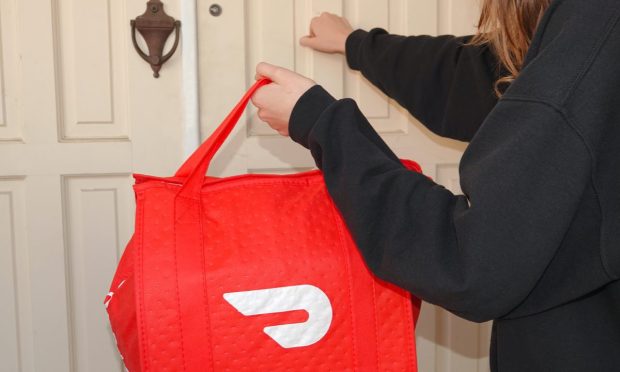DoorDash Moves Further Into Grocery With First Wholesale Club Partnership

As restaurant aggregators look to gain share of same-day grocery delivery from Instacart, further embedding their services into consumers’ daily routines, DoorDash is expanding to new grocery categories.
The aggregator announced Monday (March 28) the addition of the first wholesale club to its platform, making BJ’s Wholesale Club available for purchase through the DoorDash marketplace to both BJ’s members and non-members, offering lower prices to the former if they link their club card.
“We see the trend toward convenience only going in one direction, with grocery delivery being no exception,” said DoorDash Vice President of Business Development Shanna Prevé in a statement. “We are thrilled to welcome BJ’s to the DoorDash platform as our first wholesale club on the marketplace, continuing our mission to provide consumers with the convenience and savings they crave while empowering merchants to reach customers wherever they are.”
When it comes to competing for consumers’ grocery delivery spending, Instacart and DoorDash have different advantages. Instacart has a much wider selection of merchants. When it comes to wholesale clubs, for instance, the company has existing partnerships not only with BJ’s but also with Costco and Sam’s Club, among others. The aggregator also offers a wide range of fulfillment options, from next-day to 15-minute delivery.
Read more: Instacart Leverages Range of Fulfillment Options to Be Consumers’ One-Stop eGrocery Shop
DoorDash, meanwhile, has the advantage of being able to meet a greater variety of consumers’ food needs, both restaurant and grocery, and can leverage restaurant customers’ familiarity with its marketplace to drive grocery adoption.
Nearly one in four consumers use DoorDash aggregators, according to findings from the December edition of PYMNTS’ Digital Divide report, “The Digital Divide: Delivery Service Aggregators And The Digital Shift,” created in collaboration with Software-as-a-Service (SaaS) customer experience management (CXM) solutions provider Paytronix.
See more: Restaurants Must Sharpen Digital Tools to Match Convenience of Delivery Aggregators
The study, which drew from a survey of a census-balanced panel of more than 2,500 United States consumers, found that 42% of all consumers had used a restaurant aggregator in the previous 18 months, and 54% of those aggregator users had purchased from DoorDash.
On the other hand, only 11% of consumers bought online using an aggregator that delivered the products the same day such as Instacart, according to data from PYMNTS’ study “What Consumers Expect From Their Grocery Shopping Experience,” created in collaboration with ACI Worldwide. The study, which drew from a census-balanced survey of more than 2,300 U.S. adults, also found that only 2% of consumers ranked this channel as their most preferred grocery shopping method.
Read more: Digital Features Can Help Grocers Win Over 43% of Shoppers
DoorDash has been making moves to grow its reach not only beyond restaurant meal delivery but also beyond delivery in general. For instance, the company announced earlier this month that it is set to acquire contactless ordering and payment technology providers with an eye toward improving its in-store capabilities.
“The in-store ordering software space is fairly fragmented,” DoorDash Chief Revenue Officer Tom Pickett told PYMNTS in an interview. “Vendors tend to focus on one subset of the problem — at-table QR code ordering, serving as a full POS or serving only enterprise merchants or small and medium-size businesses. Bbot understands not only the software, but also in-store onboarding, implementation and deployment … With Bbot, we’re able to offer immediate value to merchants while integrating with their existing software.”
See more: Bbot Tech Brings Digital Convenience to on-Site Dining
